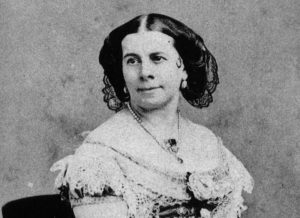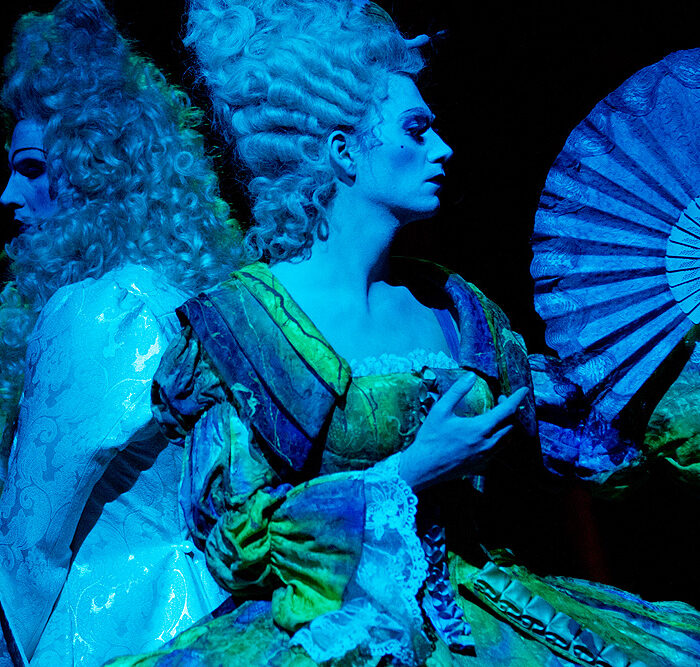
Artist Profile: Anna Bishop, World Famous 19th-Century Soprano & Shipwreck Survivor
By Mahima MacchioneDuring the nineteenth century, British soprano Anna Bishop stood out as one of the finest singers of her day – and her reputation truly reached all the corners of the globe.
Born Ann Rivière in London in January 1810, she trained at the recently created Royal Academy of Music and was taught by composer Henry Bishop, the most popular English musician of the day. Twenty-three years her senior, he was also later to become her husband.
Her initial professional engagements centered around Handel, Mozart and Beethoven but she soon turned to the Italian school – a repertoire she would make her own. She sang at the Italian Opera House in London alongside contemporary luminaries Giulia Grisi, Antonio Tamburini, Manuel Garcia, Luigi Lablache, Pauline Viardot and others, and competed with the stars of the time: Adelina Patti and Jenny Lind. Across an extensive repertoire, she developed into what was then termed a soprano sfogato – with a high and brilliant voice, and great facility.
In 1839, she abandoned Bishop and their three children and eloped with the French harpist Nicolas-Charles Bochsa, a move which caused huge scandal and much press coverage. He, instead, was 20 years her senior. Together they set off to continental Europe where they spent the following seven years making appearances in Denmark, Sweden, Russia, Austria, Germany and Tartary (where she is deemed to have performed in the Tartar language, indeed one obituary claiming she spoke 13 languages).
Then in Italy, she became prima donna assoluta at the San Carlo in Naples, where she was engaged for 27 months, making over 300 appearances in a repertoire of twenty-four operas including many Rossini and Donizetti favorites.
She had a taste for adventure like few others and her career coincided with the time when the opera house ‘invaded the colonial periphery’, as one author has put it. After Italy, she set off for the Americas, singing in New York, in San Francisco during the Gold Rush, in Mexico, Havana, Chile, Argentina and Brazil, and across Asia in the Philippines, Hong Kong, Singapore, India, Ceylon, New Zealand, and Australia. She toured incessantly and sang on every continent, her voice heard not only in opera houses and concert halls but also in makeshift venues around the world.
During her extraordinary travels, at a time when passenger ships were in their infancy, she was one of the few survivors of a shipwreck in the middle of the Pacific, but lost all her jewelry, scores and costumes. She spent three weeks surviving on seabirds and fish on a coral atoll, until she and her fellow survivors recovered two small rowboats from the ship and sailed 1400 miles towards the Mariana Islands.
After enduring another two weeks on the open boat they finally – and miraculously – reached the tiny island of Guam. Only her boat survived the trip, the other sadly being lost at sea. From there, after a short period of recovery, the unstoppable cantatrice resumed her tour of Asia. Father Ibanez del Carmen, an Augustinian friar on the island, recorded in his journal on 9 April 1866: “A boat arrived here the day before yesterday with twenty-two survivors of a wrecked ship. Among them the famous Donna Ana Bishop [sic].”
In the increasingly connected world of the nineteenth century, the fame of operatic soprano Madame Anna Bishop had preceded her – even to a remote island in the western Pacific.
The iconic soprano died in New York in March 1884 at age 74.
Signature Roles
Early in her career, Anna Bishop was engaged in a range of “dramatic concerts,” sung in costume and acted in character, including scenes from contemporary Italian operas by Rossini, Bellini and Donizetti. Each of these included at least one popular aria to showcase her voice and her pièce de résistance was the famous scene from Rossini’s “Tancredi (‘Di tanti palpiti’).”
Later on, she took on a number of roles including Amina in Bellini’s “La Sonnambula” and Ninetta in Rossini’s “La Gazza Ladra” as well as the title roles in Bellini’s “Norma” and in Donizetti’s “Linda di Chamounix,” “Lucia di Lamermoor,” and “Lucrezia Borgia.” In 1852, she sang in the first American production of Flotow’s “Martha,” with Bochsa conducting.
Categories
Opera Wiki

